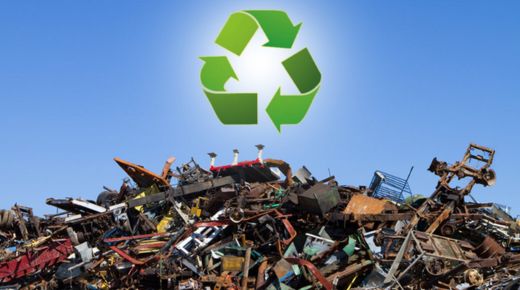In an era where sustainability is paramount, the concept of the circular economy has gained significant traction. This model emphasizes the importance of reusing and recycling materials to minimize waste and reduce the consumption of finite resources. Among various recycling initiatives, metal recycling plays a critical role in driving the circular economy forward. By transforming discarded metals into valuable raw materials, metal recycling not only conserves natural resources but also contributes to environmental protection and economic growth.
The Importance of Metal Recycling
Conserving Natural Resources
Metal recycling conserves natural resources by reducing the need for new raw materials. Traditional mining operations consume vast amounts of energy and water while disrupting ecosystems. In contrast, metal recycling requires significantly less energy—up to 95% less energy is needed for recycling aluminum compared to producing it from bauxite ore. By recycling metals, we can extend the lifespan of existing resources and mitigate the environmental impact associated with extraction and processing.
Reducing Greenhouse Gas Emissions
The energy savings associated with metal recycling also translate into a substantial reduction in greenhouse gas emissions. According to estimates, recycling metals can lead to significant reductions in carbon dioxide emissions. For example, recycling steel reduces emissions by 58% compared to producing new steel from virgin ore. As industries and governments strive to meet emissions reduction targets, metal recycling emerges as a vital strategy in the fight against climate change.
Economic Benefits of Metal Recycling
Job Creation and Economic Growth
The metal recycling industry is a robust economic sector that creates jobs and stimulates growth. Recycling facilities require a diverse workforce, from those engaged in the collection and sorting of metals to engineers and technicians who oversee processing operations. According to the Institute of Scrap Recycling Industries (ISRI), the U.S. recycling industry supports over 1.1 million jobs and contributes $117 billion to the economy. As demand for recycled metals grows, so too does the potential for job creation and economic development.
Driving Innovation
Metal recycling is not just about processing waste; it also drives innovation in various industries. As manufacturers increasingly turn to recycled materials to meet sustainability goals, they are investing in advanced technologies to improve recycling processes. Innovations such as automated sorting systems and improved smelting techniques enhance efficiency and recovery rates, ensuring that more metals are captured and repurposed. This commitment to innovation fuels economic growth while fostering a culture of sustainability.
Challenges in Metal Recycling
Contamination and Quality Control
While the benefits of metal recycling are clear, several challenges must be addressed to maximize its potential. One significant issue is contamination, which can adversely affect the quality of recycled materials. Contaminants such as plastics, oils, and other non-metal materials can reduce the value of recycled metals and complicate processing. Effective sorting and separation techniques are essential to minimize contamination and ensure high-quality output.
Market Fluctuations
The metal recycling market is also susceptible to fluctuations in demand and pricing. Economic downturns or changes in manufacturing practices can lead to reduced demand for recycled metals, impacting the viability of recycling operations. To mitigate this risk, recycling facilities must adapt to market changes by diversifying their operations and exploring new markets for recycled materials.
The Role of Policy and Regulation
Supporting Sustainable Practices
Government policies and regulations play a crucial role in promoting metal recycling and supporting the circular economy. Incentives such as tax breaks for recycling facilities, stricter regulations on waste disposal, and initiatives encouraging manufacturers to use recycled materials can significantly impact the industry’s growth. By establishing a supportive regulatory framework, governments can foster a culture of sustainability that encourages recycling as a standard practice.
Encouraging Consumer Participation
Engaging consumers in the recycling process is equally important. Public awareness campaigns can educate individuals about the benefits of metal recycling and motivate them to participate actively. By fostering a culture of recycling at the grassroots level, communities can contribute to a more sustainable economy while enhancing the overall effectiveness of recycling programs.
Conclusion
Metal recycling is a cornerstone of the circular economy, transforming waste into valuable resources while contributing to environmental sustainability and economic growth. By conserving natural resources, reducing greenhouse gas emissions, and creating jobs, metal recycling exemplifies the potential of circular practices. However, to realize its full potential, it is essential to address the challenges posed by contamination and market fluctuations, supported by robust policies and consumer engagement. As we move towards a more sustainable future, embracing metal recycling will be critical in creating a resilient economy that values waste as a resource.

